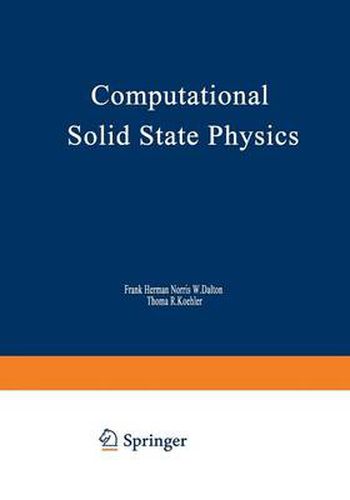Readings Newsletter
Become a Readings Member to make your shopping experience even easier.
Sign in or sign up for free!
You’re not far away from qualifying for FREE standard shipping within Australia
You’ve qualified for FREE standard shipping within Australia
The cart is loading…






This title is printed to order. This book may have been self-published. If so, we cannot guarantee the quality of the content. In the main most books will have gone through the editing process however some may not. We therefore suggest that you be aware of this before ordering this book. If in doubt check either the author or publisher’s details as we are unable to accept any returns unless they are faulty. Please contact us if you have any questions.
During the past 20 years, solid state physics has become one of the major branches of physics. 1-2 Today over one-third of all scientific articles published in physics deal with solid state 3 topics. During the last two decades, there has also been ra~id growth of scientific computation in a wide variety of fields. -5 The combination of solid state physics and comp~tation may be termed computational solid state physics. This emerging field is distin guished from theoretical solid state physics only to the extent that electronic computers rather than slide rules or backs of envelopes are used to solve numerical or logical problems, test scientific hypotheses, and discover the essential physical content of formal mathematical theories. Papers in computational solid state physics are widely scatter ed in the literature. They can be found in the traditional physics journals and review series, such as The Physical Review and Solid State Physics; in more specialized publications, such as Journal of Computational Physics, Computer Physics Communications, and Methods in Computational Physics; and in the proceedings of a number of re 6 9 cent conferences and seminar courses. - Plans for holding an International Symposium on Computational Solid State Physics in early October 1971 were formulated by Dr.
$9.00 standard shipping within Australia
FREE standard shipping within Australia for orders over $100.00
Express & International shipping calculated at checkout
Stock availability can be subject to change without notice. We recommend calling the shop or contacting our online team to check availability of low stock items. Please see our Shopping Online page for more details.
This title is printed to order. This book may have been self-published. If so, we cannot guarantee the quality of the content. In the main most books will have gone through the editing process however some may not. We therefore suggest that you be aware of this before ordering this book. If in doubt check either the author or publisher’s details as we are unable to accept any returns unless they are faulty. Please contact us if you have any questions.
During the past 20 years, solid state physics has become one of the major branches of physics. 1-2 Today over one-third of all scientific articles published in physics deal with solid state 3 topics. During the last two decades, there has also been ra~id growth of scientific computation in a wide variety of fields. -5 The combination of solid state physics and comp~tation may be termed computational solid state physics. This emerging field is distin guished from theoretical solid state physics only to the extent that electronic computers rather than slide rules or backs of envelopes are used to solve numerical or logical problems, test scientific hypotheses, and discover the essential physical content of formal mathematical theories. Papers in computational solid state physics are widely scatter ed in the literature. They can be found in the traditional physics journals and review series, such as The Physical Review and Solid State Physics; in more specialized publications, such as Journal of Computational Physics, Computer Physics Communications, and Methods in Computational Physics; and in the proceedings of a number of re 6 9 cent conferences and seminar courses. - Plans for holding an International Symposium on Computational Solid State Physics in early October 1971 were formulated by Dr.